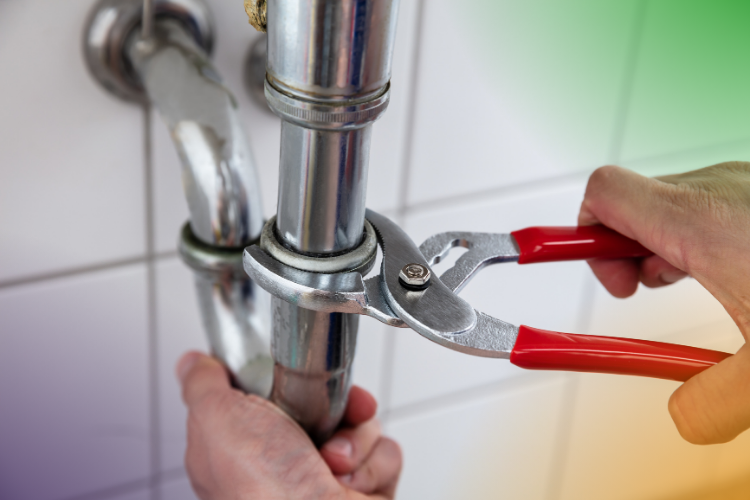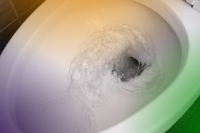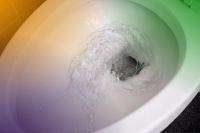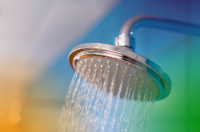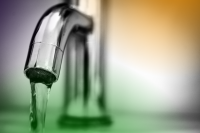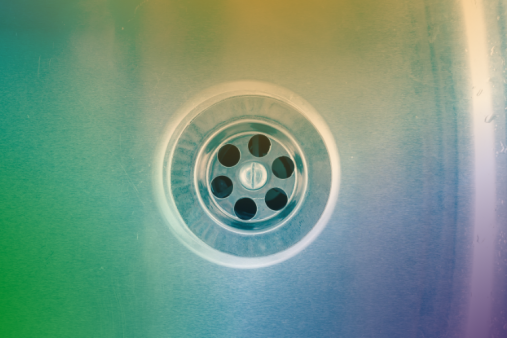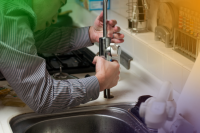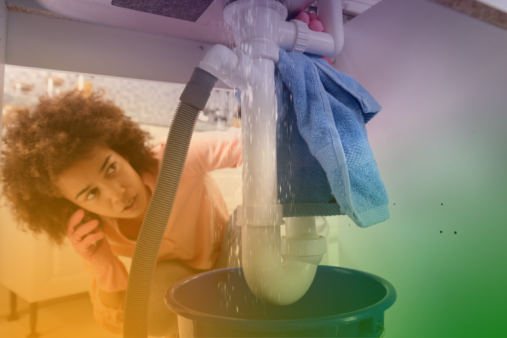There are a number of ways to deal with the clearance of pipes blocked in your property. Read our guide.
Blocked drains and pipes is one of those household emergencies which has most of us reaching for the phone and calling the nearest 24 hour emergency plumber.
This can result in a bill for several hundreds of pounds, assuming the plumber or drain specialist can come straight away.
But this job doesn’t necessarily need the services of a plumber.
You could potentially fix this yourself without incurring any costs as such.
So what can you do to try to solve the problem yourself first?
Blocked pipes have to be one of the most annoying and inconvenient things about being a homeowner. Sometimes you notice a problem when your shower starts to drain more slowly, or you notice that the water isn’t running away out of the sink as it should, and sometimes there’s a sudden blockage which means you can’t flush the loo or use the sink at all. Whatever the reason for the blockage there are a few things that you can try before calling in the plumbing experts.
How do I Know My Drains are Blocked?
Often, the first thing you’ll notice is that your sink, shower or bath is draining more slowly than it used to.
Blocked drains are usually not something which happens suddenly, it’s a gradual deterioration over time.
If you can take steps to try to stop the problem getting to the acute stage, it’s well worth it.
Never flush items such as nappies, wipes, sanitary towels or cotton buds down the toilet.
These are the main causes of blockages.
In the kitchen, the “sink and plughole unblocker” products which are sold in supermarkets and DIY stores can be very effective.
For best results, follow the manufacturer’s instructions to the letter and always wear rubber gloves.
Unblocking Pipes Using Chemical Products
Every large supermarket and DIY store will have a wide range of products designed to help you unblock sinks or plugs. All of these products work in basically the same way; you pour the product down the sink, leave it to work for a few hours or overnight, and then rinse it away with clean water. This should be the first thing you try in cases of minor blockages or issues which don’t have to be resolved immediately; buying a drain cleaning product will cost less than £10, and if it resolves your issue then there is no need for further expense. These products are made with strong chemicals though and should be handled with care and exactly following the manufacturer’s instructions. Keep them well out of the way of the kids, and use in a well-ventilated space.
Stage 1: Sink Plunger
The first thing to try if you notice that your sink or bath is not draining properly is to try to solve the problem with a sink plunger.
These are widely available and can be bought for a couple of pounds in all hardware or DIY stores.
It’s a good idea to regard the plunger as an essential piece of household kit.
Keep one under the kitchen sink so that you always know where it is when you need it.
Very carefully apply pressure with the blockage until the water begins to flow more freely again.
If the drain is still blocked after you have tried your best with the plunger.
The problem may be deeper down in the drains and you’ll need to progress to Stage 2 if the plunger doesn’t have the desired effect of clearing the drainage problem.
Using a Plunger to Clear a Blocked Pipe
The second thing you’ll want to try if the chemical products haven’t worked is the traditional sink plunger. Again this is a very low-tech method of clearing blockages but one which can be very effective. Sink plungers work by sucking any blockage back and forth in the pipe until the blockage works its way free and can be flushed away. When you’re using a sink plunger start gently, making small movements and gradually building up the strength until the blockage moves. Take care to cover any overflow in a sink or bath to make sure you’re not soaked with water when the blockage frees itself. If after a few minutes of firm use of the plunger you are not seeing the water flowing away any faster, then it might be time to call it a day and move on to the next thing to try.
Unblocking Waste Traps
Waste traps are fitted under the waste outlet of your bath or shower, and are designed to trap hair or other things which fall into the plughole and stop them from getting into the pipes. Waste traps can quickly get bunged up, especially if people with long hair are using the shower regularly. Usually, it’s a very simple job to pop the waste trap out from the plughole and clear it out. This can be quite a messy job, but it’s worth doing regularly to make sure that the traps don’t get too blocked up the first place. A bathroom or kitchen sink will have a different kind of waste trap called a U-bend. This the U-shaped piece of pipe at the back of the sink which waste water flows through. Om modern sinks, removing just the U-bend section of the pipe should be relatively straightforward, you just unscrew the fittings at each end of the section. Once you’ve removed the U-bend, it should be a relatively simple process to rinse through the U-bend and remove any blockages.
Stage 2: Drain Rods
Plumber’s Rods and Jet Washing to Clear Blocked Pipes
if you’ve tried everything to sort blockages and failed, or think that the issue lies in the drains and pipes outside the house rather than inside, then you might have to get serious about dealing with your blockages. If you call in a professional drain company the first thing they’ll do is get out a set of drain rods, which are long, flexible pipes designed to be screwed together to create one long length. You can buy a set of drain rods for under £20, so it’s worth getting a set and having a go at clearing the blockage yourself. Using them is easy, and often the tricky bit is finding out where to get access to your drains. Find the manhole cover or drain cover, lift it, then slowly push the drain rods through the drain until you feel the blockage. Once you’ve established where the pipes are blocked, you can then push and jiggle the drain rods to try to clear the blockage. If you have a jetwash or jetting machine this can help blast blockages away, assuming they are in an accessible place.
Drain rods are what you’ll see the professionals using.
Drain rods are sets of jointed, flexible poles which you can use to insert into the drain and poke and push at anything causing a blockage to move it.
You can also fit a range of attachments onto the ends of the rods to scrape or brush the inside of your drains to avoid a repeat of the blockage.
A set of drain rods will cost less than £30.
This is a lot less than you’d pay a professional to do the job for you and of course your drain rods can be reused again if needed.
Start with locating your manhole cover, or access point for the drains in your garden or outside the house.
Remember that drains will run in a straight line from the house to the main drain in the street.
Use your set of rods to feel your way up the drain and try to work out where the obstruction might be.
A plunger or brush on the end of the rods may be sufficient.
If you still can’t solve the problem with sink plunger or drainage rods, then it’s time to call in the professionals.
They may need to use a camera or a power flushing system to clear the drains for you.
If you want to compare quotes from plumbing contractors use Top Tradespeople’s free no-obligation quotes comparison services.
Calling in the Professionals to Fix Your Blocked Pipes and Drains
If you’ve exhausted your DIY skills, the tools you have available and your patience, then it might be time to bite the bullet and give the drainage professionals a call. Many firms will offer a 24 hour service, but the call out charge at 2am is likely to be much higher than at 10am, so if you can, arrange for them to visit during normal business hours. Don’t panic and call someone out in the middle of the night if you can just readjust the way you live until a more reasonable hour. Tell the drain company what you’ve already tried so they don’t waste their time (and your money) by replicating the work you’ve already done. The trouble with unblocking pipes and drains it’s often impossible for a contractor to give you an upfront price, given that they don’t know where the problem is, and how they’re going to resolve it.
Some of the large companies offer a fixed price drain and pipe clearing service, which can help limit costs. Getting a company out to unblock drains or pipes internally or externally, using plumbing rods and jetting should cost upwards of £100, depending on the size of the problem. Always establish when speaking to a company on the phone whether they operate on a per hour or per job basis. Usually it’s cheaper to get internal pipes and drains unblocked than work done on drains outside your property.
